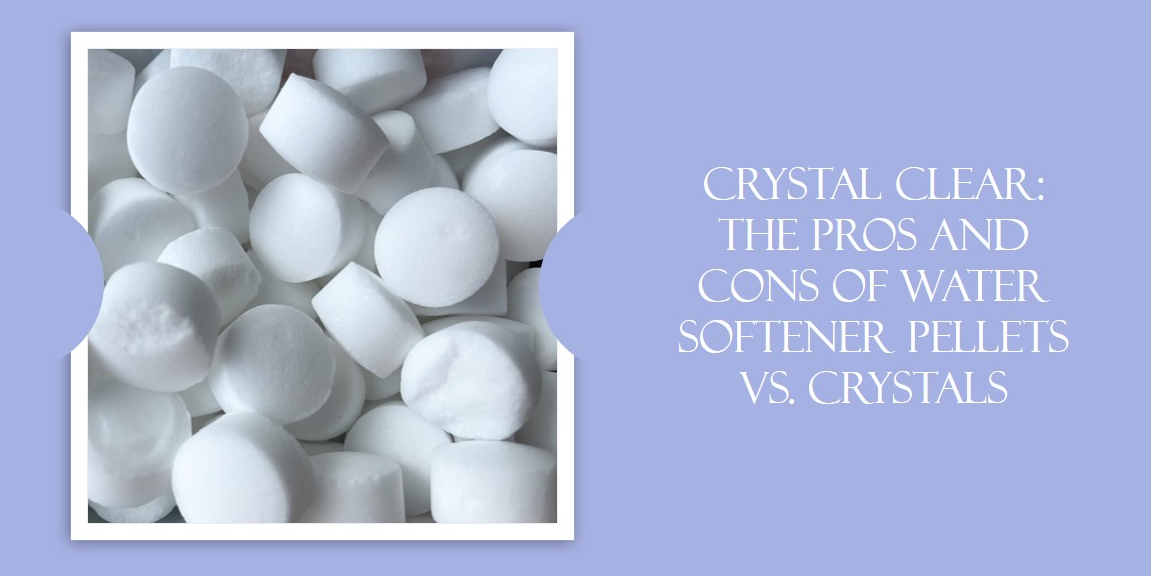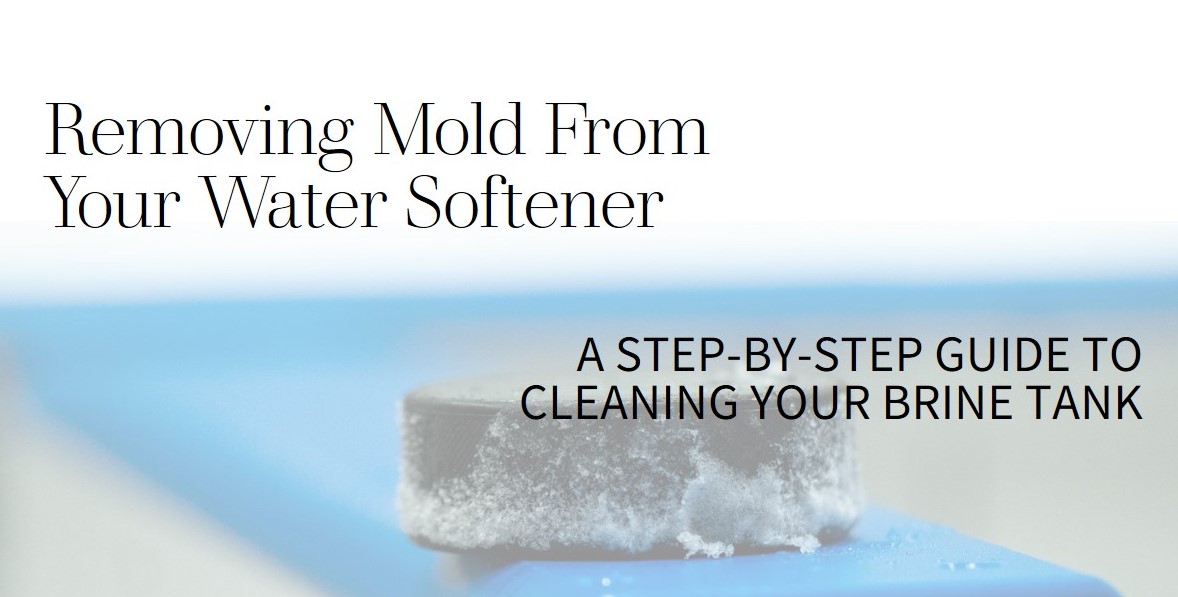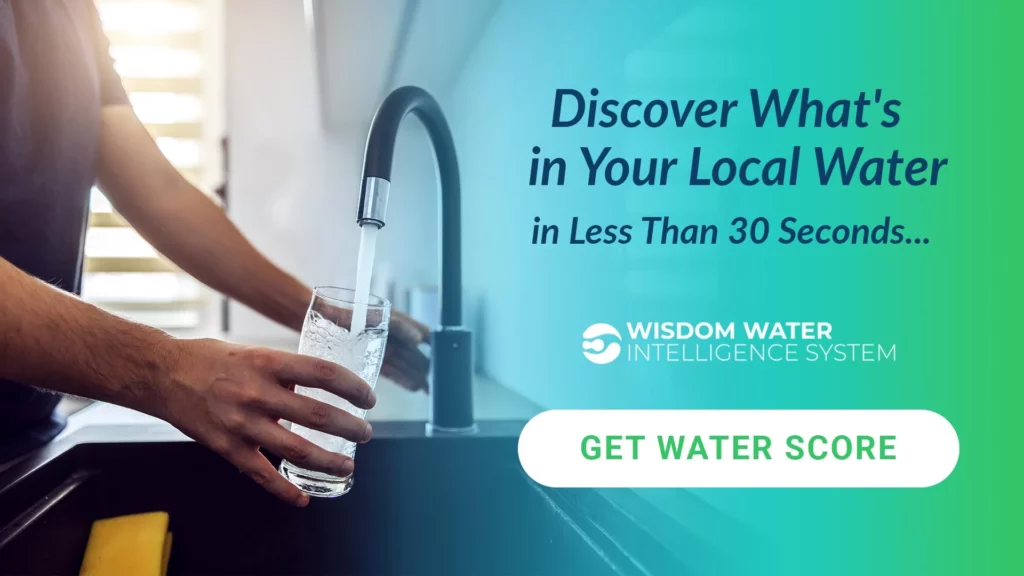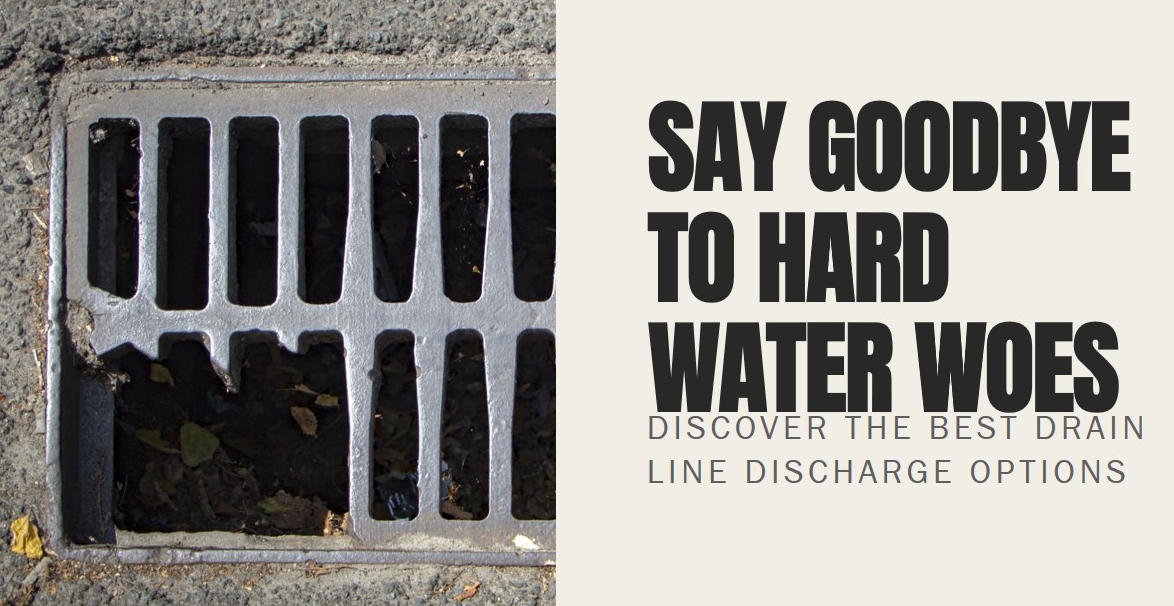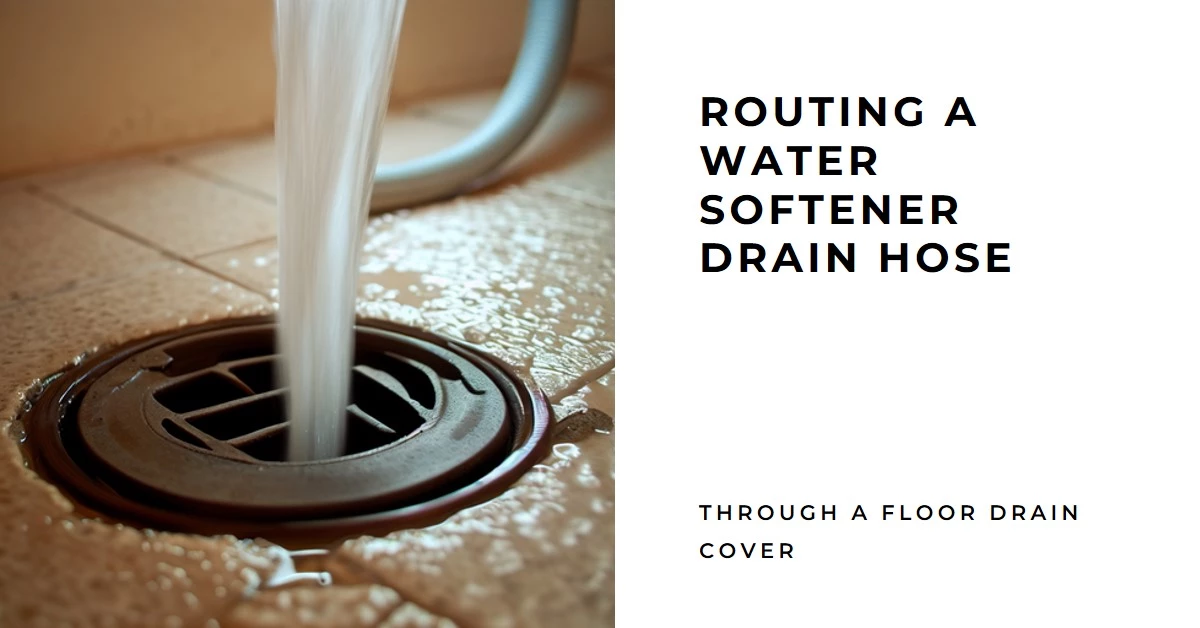Hard water can cause a variety of problems in homes, from dry skin and hair to scale buildup on fixtures and appliances. To combat hard water issues, many homeowners turn to water softeners. Water softeners work by removing the calcium and magnesium ions that make water “hard.”
There are two main types of salt-based water softeners: those that use salt pellets, and those that use salt crystals. Both use sodium ions to replace the hard water minerals and soften the water. However, there are some key differences between pellets and crystals that homeowners should consider when choosing a water softener.
This comprehensive guide examines the pros, cons, costs, and other factors to weigh when deciding between water softener pellets vs. crystals.
Overview of Water Softeners
Before comparing pellets and crystals, it’s helpful to understand what water softeners do and how they work.
What Does a Water Softener Do?
Water softeners remove the magnesium and calcium ions that cause hard water. Hard water leaves behind limescale and soap scum, damages appliances and plumbing, and dries out skin and hair.
By replacing the hard water minerals with sodium ions, water softeners transform the hard water into “soft water.” Soft water prevents scale buildup, helps soap lather better, protects appliances, and leaves skin and hair feeling smoother.
How Do Water Softeners Work?
Water softeners use a process called ion exchange to remove hardness minerals and soften water. Here are the basic steps:
- Hard water enters the mineral tank and flows through a bed of resin beads. The beads are covered in sodium ions.
- As the hard water passes through, the sodium ions on the beads swap places with the calcium and magnesium ions in the water. This exchanges the hard minerals for soft sodium ions.
- The water, now soft, flows out of the mineral tank and into the home.
- Over time, the resin beads become saturated with calcium and magnesium. To recharge the beads, the softener goes through a regeneration cycle.
- During regeneration, a strong brine solution (salt water) flows through the tank. The brine resets the resin beads by replacing the built-up hard minerals with more sodium ions.
- The system then flushes the hard water minerals down the drain.
- Once regeneration is complete, the softener resumes normal operation, softening the household water.
Water Softener Salt Types
The regeneration process relies on a brine solution made from dissolved salt. There are two main types of salt used in water softeners:
Salt Pellets
- Pellets are small, compressed pieces of evaporated salt.
- The standard pellet size is about 1/8” diameter, similar to the size of fish food.
- Pellets dissolve easily in water to create brine.
- They are purchased in 40 lb. or 80 lb. bags.
Salt Crystals
- Crystals are larger, irregularly shaped pieces of evaporated salt.
- They come in a few different sizes, from 1⁄4” chunks up to 1” pieces.
- Crystals dissolve in water to make brine solution.
- They are bought in 40 lb. or 80 lb. bags.
While both pellets and crystals effectively regenerate the resin beads, there are some advantages and disadvantages to each type.
Pros and Cons of Water Softener Pellets
Let’s look at the key benefits and drawbacks of using pellets in your water softener:
Pros
- More efficient: The small size of pellets means they have more surface area. This allows them to dissolve faster and more efficiently than crystals.
- Fewer bridging problems: Pellets are less prone to “bridging.” This is when a gap forms between the salt and the water, preventing proper dissolution.
- Easier to transport: The bagged pellets are easier to handle and pour than large crystals. This makes pellets more convenient to transport and add to the brine tank.
- Ideal for smaller tanks: Pellets work well in standard residential brine tanks. The small beads can flow freely and make consistent brine.
Cons
- Potential dust: Some salt pellets break down into fine salt dust when pouring. This can create a mess and be difficult to clean up.
- More expensive: Pellet bags are typically more expensive per pound than bulk crystals. However, pellets may last longer due to better efficiency.
- Can compact over time: In some cases, pellets settle and compact tightly in the tank. This can slow dissolution and cause bridging.
- Not for oversized tanks: Pellets may not dissolve well in very large commercial tanks with strong brine wells. Crystals are usually better for giant tanks.
Pros and Cons of Water Softener Crystals
Next, let’s look at the benefits and potential drawbacks of using salt crystals in water softeners:
Pros
- Cheaper price: Salt crystals generally cost less per pound than pellet salt bags. Buying crystals in bulk saves the most money.
- Less dust: The large crystal pieces produce almost no dust when pouring them into the tank. No cleanup required.
- No bridging issues: The heavier pieces rarely bridge gaps between salt and water.
- Works in large tanks: The large crystals dissolve well even in very large commercial softener tanks.
Cons
- Slower to dissolve: The limited surface area of crystals makes them dissolve more slowly than pellets. This may make regeneration less efficient.
- Harder to transport: The bulk crystals can be very heavy, making them difficult to lift and pour into the brine tank.
- Messier to load: The jagged crystals are not as cleanly and easily poured as small pellets. Spilling can occur.
- May “cave-in”: In some cases, a salt bridge forms and causes crystals to cave-in, compacting tightly in the tank.
Cost Comparison
A major factor when choosing between pellets vs. crystals is cost. Let’s compare the typical pricing:
- Pellet salt costs roughly $6 to $15 per 40 lb. bag. Grocery-grade pellets are cheapest while specialty pellet blends cost more.
- Bulk crystals range from $5 to $9 for 40 lbs. Hardware store salt crystals are very affordable. Solar crystals are more expensive.
- Pellets run about 25 cents to 50 cents per pound of salt.
- Bulk crystals average 15 cents to 30 cents per pound.
Although crystals are cheaper per pound, keep in mind that pellets often use salt more efficiently. The increased cost of pellets may be offset somewhat by needing less salt overall.
Crystals are the most economical option for very large tanks, while pellets are the best value for standard residential softeners.
Water Softener Pellet Salt Recommendations
If you opt for pellets, these top-rated choices dissolve quickly and efficiently:
- Morton Clean & Protect Water Softening Pellets
- Diamond Crystal Red-Out Pellets
- Pellet Soft Plus High Efficiency Water Softener Salt Pellets
- Iron Fighter Pellets by Diamond Crystal
- Kleenwater Softener Salt Pellets
Morton and Diamond Crystal are leading brands. Their pellet formulations reduce hard water staining and keep the resin beads cleaner. Iron Fighter pellets help remove iron from water.
Water Softener Crystal Salt Recommendations
These large crystal salt options are affordable and effective:
- Morton Coarse Solar Salt Crystals
- Diamond Crystal Solar Naturals Coarse Salt Crystals
- Cargill Coarse Solar Salt Crystals
- Industrial Grade Large Salt Crystals
- SolarCoarse Salt Crystals by Infinity Salt
Morton, Diamond, and Cargill make premium solar evaporated crystal salts. Solar salts have few impurities that might affect the resin. Industrial grade crystals are budget-friendly for very large tanks.
Pellet Salt vs. Crystal Salt: Which Is Better for Your Home?
- For standard residential softeners, salt pellets are typically the better choice. Pellets dissolve efficiently in the small- to medium-sized tanks. They are convenient to use and pour.
- In oversized tanks, large salt crystals usually work best. The crystals dissolve well even in very high volumes of water. This saves on salt costs when softening entire commercial buildings.
- If you want convenience and don’t mind paying a little more, pellets may be preferable. They’re tidier and easier to handle.
- For the lowest salt price, bulk crystals are the most affordable. However, you’ll have to lift and pour the heavy bags.
- If your water has iron, specialized iron-fighting pellets help keep the resin clean while removing iron.
Consider your specific tank size, water quality, salt usage, and budget when choosing between pellets or crystals. The pros and cons outlined above can help inform your decision.
How to Choose the Right Water Softener Overall
Besides the type of salt, there are other important factors in choosing the best water softener system for your home:
Match the Capacity to Your Water Usage
Choose a softener that’s properly sized for the water usage (and hardness level) of your household. Underpowered units will fail to keep water soft. Oversized softeners are costly and wasteful.
Use this formula:
Grains of hardness x household members x 75 gallons = softening capacity needed
(Multiply by 85 gallons if you have a large home.)
Shop for Key Features
Look for softeners with:
- Efficient salt usage
- Accurate electronic meters
- User-friendly programmable controls
- Corrosion-resistant tanks
- Bypass valves for easy maintenance
- Built-in memory to retain settings
- Warranties of at least 5-10 years
Compare the Costs
- Purchase price – Basic models start under $200. Advanced models run $500 to $2,000.
- Installation cost – Often $200 to $500 to have a plumber install the softener.
- Salt costs – Factor about $100 to $200 per year for salt.
- Maintenance – Basic DIY maintenance costs $10 to $30 per year for cleaning supplies.
How to Install a Water Softener
Water softener installation isn’t difficult, but does require some plumbing knowledge. There are several steps:
Materials Needed
- Water softener unit
- Bypass valve
- Flexible stainless steel connectors (with rubber gaskets)
- PEX tubing or copper pipes
- Pipe cement/primer
- Teflon tape
- Hose clamps
- Plumber’s putty
- Brine tank
Step-by-Step Guide
- Turn off water supply and drain pipes.
- Cut into the main water supply line.
- Install bypass valve onto cut pipes.
- Attach water softener to bypass valve with flex connectors.
- Connect brine tank to softener with a small tube.
- Run drain line from softener into a floor drain or laundry sink.
- Twist or solder pipes to inlet and outlet ports.
- Activate water supply and check for leaks.
- Program the softener settings and controls.
- Add salt to brine tank.
- Flush lines and test water hardness to confirm softening.
Most plumbers charge $200 to $500 to install a water softener. Doing it yourself saves hundreds of dollars.
How to Maintain a Water Softener
Regular maintenance keeps a water softener working properly. Here are the key tasks:
Add Salt
- Check salt levels monthly and refill as needed. Use the type of salt recommended by the manufacturer.
- Avoid letting the tank run out of salt completely. This hampers softening.
Inspect Resin Beads
- Once a year, shine a flashlight into the mineral tank. Check for fouling and a distinct separation between beads and brine.
- If beads are fouled, clean tank and change resin.
Sanitize System
- Sanitize the softener every 1-2 years by adding chlorine bleach during regeneration or using a special sanitizer solution.
Test Hardness
- Periodically test water hardness with test strips after the softener. Ideal hardness is 0-1 grains per gallon.
Replace Filters
- Replace any pre-filters and air-filters as recommended. Change every 2-6 months.
Watch for Problems
- Signs of issues include hard water, salty water, foul smells, higher salt use, or resin beads leaking from the tank.
- Contact a professional for repairs as needed. Annual inspections are advisable.
With occasional maintenance, a quality water softener will last 10-15 years.
Water Softener Pellets vs. Crystals: Main Takeaways
Deciding between pellets vs. crystals for your water softener comes down to these key factors:
- Pellets dissolve faster and regenerate more efficiently but cost more initially. They are simpler to handle and recommended for typical home softeners.
- Crystals are cheaper to buy in bulk but slower dissolving. They work well in very large tanks. Crystals are heavy to lift and can spill during filling.
- For most residential softeners, sodium chloride pellets are the best option. Go with crystals only for very large commercial systems.
- When choosing a softener, match the capacity to your household’s water needs. Shop for features like electronic controls and corrosion resistance.
- Carefully calculate costs for the unit, salt purchases, and professional installation if needed.
- With occasional maintenance like resin inspection, sanitizing, and salt replenishment, water softeners last 10-15 years.
Thoughtfully weighing the pros and cons of pellets vs. crystals will help you pick the best salt type and water softening solution for your home and family. This guide covers all the key factors to make an informed decision.

